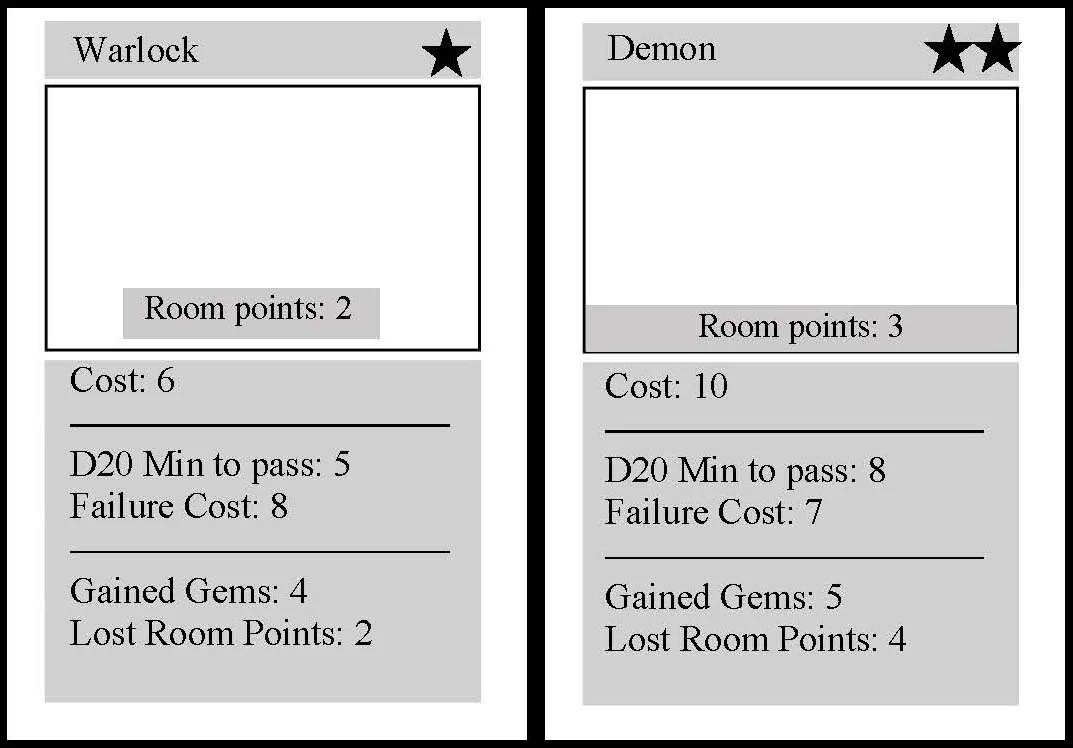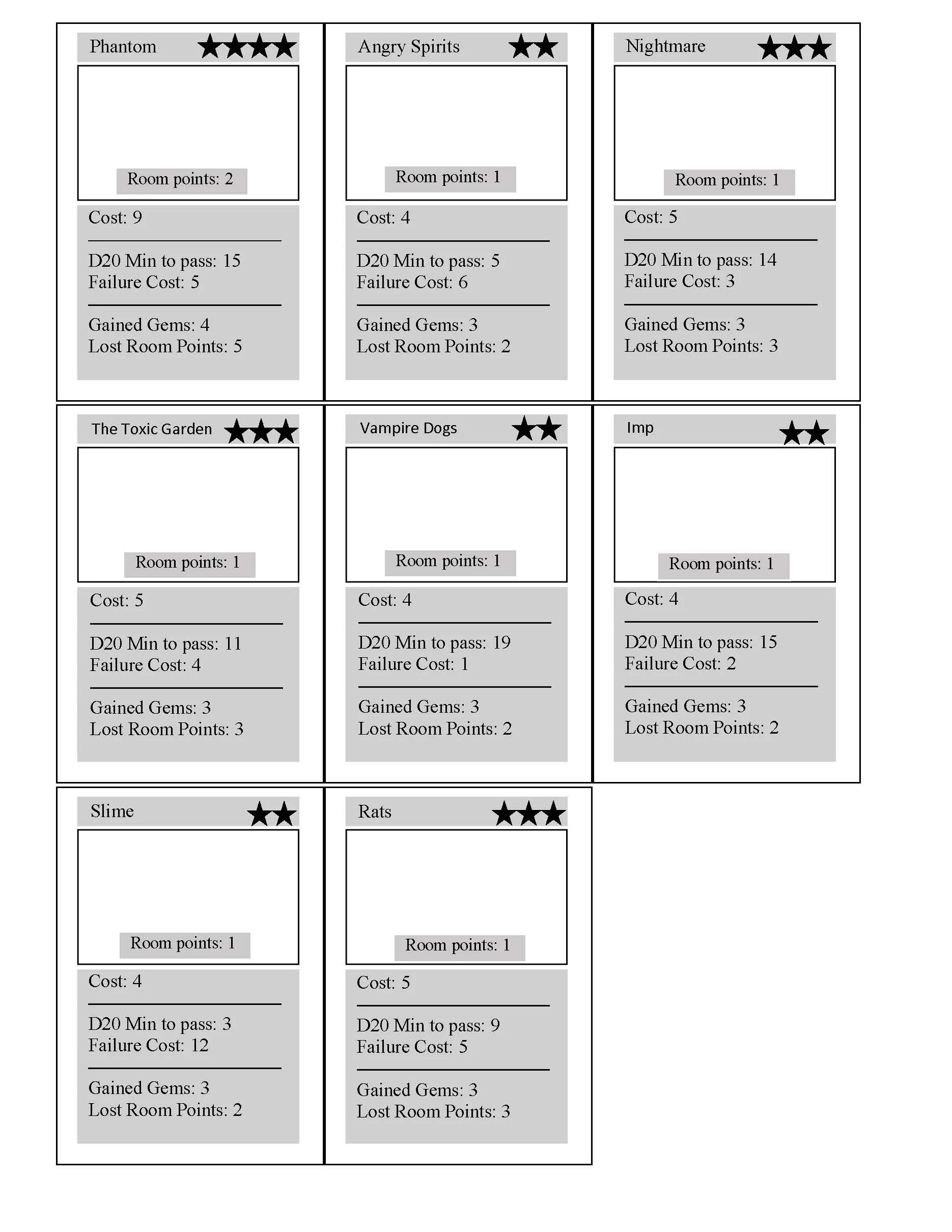Overview
This prototype is a co-op game developed by Daniel Olleman and a partner. The objective of the game is to escape from a Haunted House by completing cards. Once the player has completed enough rooms they will start getting opportunities to try and escape. If they succeed at one of these opportunities the players win. If in contrast the players run out of gems, Then the players lose.
Description
Contribution to project:
Co-designing the objective and game loop
Designing the card template
Balancing the cards
Rules:
Game objective and Name: Escape The Haunted House
Game Materials:
2 pawns to represent the players
Room cards (See images below)
D20
2 sets of 18 gems to create player gem piles
Counter dice (2x ten sided dice)
Setup:
Each player has 18 gems in a pile next to them at the start
Set counter die to 30 (easy game) or 40 (hard game)
Shuffle room card deck and deal out the first room card face up placing both player tokens on it.
Turn:
Start
Decide whether to roll dice, pay room cost, or gain gems and lose room points
If you pay
decide which player should pay from their gems, only one player has to pay to let both players progress.
Subtract total room points earned from counter die (So the room points earned by both players, the room points * 2)
Draw a new card and place players on new card
(it's hard to get new tokens so try to conserve them!)
Example:
A card has a cost of 9 and a room point value of 3. Player 1 has 18 gems. Player 1 decides to pay the cost removing 9 gems from their pile to pay the cost. Both players subtract 3 from the counter die lowering its value from 30 to 24. They then draw the top room from the deck for next turn.
If you decide to roll dice
Each player rolls a d20
If the roll is equal to or more than the D20 minimum on the card
the player can go through without paying
Subtract total room points earned from counter die (depending on who passed, room points * 2 if both players passed, room points * 1 if only one player passed)
Draw a new card and place players on new card
Example:
A 3 room point card has a D20 minimum of 7 and a failure cost of 7. Player 1 decides to roll for it. Player 1 rolls a 7 on their dice. Since 7 is equal to the minimum of 7 player 1 succeeds. The counter is at currently 24. Player 1 subtracts the room points of 3 from the counter reducing it to 21. Player 1 proceeds to the next room flipping the top card of the deck. It is now player 2’s turn to roll for the room.
If the roll is less than the D20 minimum on the card
The player must pay the Fail Cost (FC)
Do not subtract room points from counter (Because neither player earned room points)
Draw a new card and place players on new card
Example:
After player 1 rolled for the 3 room point card which has a D20 minimum of 7 and a failure cost of 7, player 2 rolls. Player 2 rolls a 5. Since 5 is less than the minimum value of 7, Player 2 must pay the failure cost. Player 2 has 18 gems. The failure cost is 7. Player 2 removes 7 gems from their pile leaving 11 gems. Player 2 then progresses two the next room with player 1 and starts the next turn. Note the counter that was at 21 stays at 21
If the players decide to gain gems and lose room points
The players gain the amount of gems listed on the room card divided as they choose among the two players (note: neither player may accumulate more than the initial 18 gems this way).
The room points lost number is added to the counter die.
A new room card is drawn and both player tokens advance to the new card.
If counter die is 20 or less roll to escape (see game end).
End turn
Game end:
Escape:
To escape the players must roll a D20 and get a result equal to or above the counter die.
The counter die must be less than or equal to d20
Only one player can roll per room.
If one player rolls and get more than the counter both players can escape
If a player rolls and get less than the counter die then the player must complete another turn, go to the next card, and then they will be able to roll again
Death:
If a player loses all gems then they are dead
If one player is dead the other player can move on without them
Too Slow:
If the deck runs out of cards to complete and the players have not escaped then the players lose.
Once each player has escaped or died the game is over. If both players escape it is a complete victory. If one player escapes it is a grim victory. If neither player escapes, it is a loss and the house has consumed both of you.



